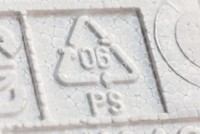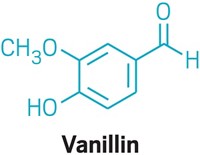Advertisement
Grab your lab coat. Let's get started
Welcome!
Welcome!
Create an account below to get 6 C&EN articles per month, receive newsletters and more - all free.
It seems this is your first time logging in online. Please enter the following information to continue.
As an ACS member you automatically get access to this site. All we need is few more details to create your reading experience.
Not you? Sign in with a different account.
Not you? Sign in with a different account.
ERROR 1
ERROR 1
ERROR 2
ERROR 2
ERROR 2
ERROR 2
ERROR 2
Password and Confirm password must match.
If you have an ACS member number, please enter it here so we can link this account to your membership. (optional)
ERROR 2
ACS values your privacy. By submitting your information, you are gaining access to C&EN and subscribing to our weekly newsletter. We use the information you provide to make your reading experience better, and we will never sell your data to third party members.
Environment
Mining Industrial Waste For Medicine
Green Chemistry: A process developed in China turns dye and detergent byproducts into a tuberculosis drug
by Rachel Zurer
November 15, 2010

Every year, factories producing a key ingredient used in dyes and detergent brighteners generate 500 billion gal of toxic wastewater. Now Chinese researchers have developed a process to turn that waste into a drug used to treat multi-drug resistant tuberculosis (Environ. Sci. Technol., DOI: 10.1021/es101950k).
Industrial-scale production of dye-precursor 4,4'-dinitrostilbene-2,2'-disulfonic acid (DNS) creates byproducts that are generally tough to break down and non-biodegradable, such as p-nitrotoluene-o-sulfonic acid. As a result, current DNS waste treatments are energy-intensive and costly, says Xiaobin Fan, a chemical engineer at Tianjin University.
Fan and his colleagues wanted to do better. First, they analyzed the components in the wastewater and found that all the contaminants had a basic structure in common: a substituted aromatic sulfonic acid. They then thought up ways to convert chemicals with that basic structure into something useful.
The researchers came up with a process, which involves an oxidation, reduction, and sodium hydroxide treatment step, to convert more than 85% of the wastewater's contaminants into 4-amino-2-hydroxybenzoic acid (paramycin), which is part of cocktail treatments for multi-drug-resistant tuberculosis. Each year, drug-makers produce 500 tons of paramycin. But it also has non-medical uses: Chemical manufacturers synthesize over 1 million tons of the compound for use in the production of polymers, pesticides, and alumina.
Treating DNS wastewater normally costs about $4/m3 of wastewater, but this new process can net $77 worth of valuable chemicals per m3 of wastewater, according to the researcher's calculations. This route to paramycin is also more environmentally friendly than existing methods, producing less waste per amount of paramycin produced. "It solves environmental problems and obtains economic benefits at the same time," says Fan.
The Huayu Chemical Company in China, a major world supplier of DNS, cooperated with the researchers on the project and has adopted the new process on a pilot-scale to optimize the technique.
Martin Mulvihill, a chemist with the University of California, Berkeley's Center for Green Chemistry, praised the researchers for evaluating the new process's environmental impact to ensure that it was less wasteful than existing paramycin routes: "That really takes it above other work that just looks at using a waste product to make something of value."





Join the conversation
Contact the reporter
Submit a Letter to the Editor for publication
Engage with us on Twitter